Cranberry kombucha is here to boost your winter with a bright and delightful taste! With tons of vitamin C and other herbal properties, the cranberry orange syrup in this second ferment is perfect for winter when cranberries are in season, but it suits any time of year!
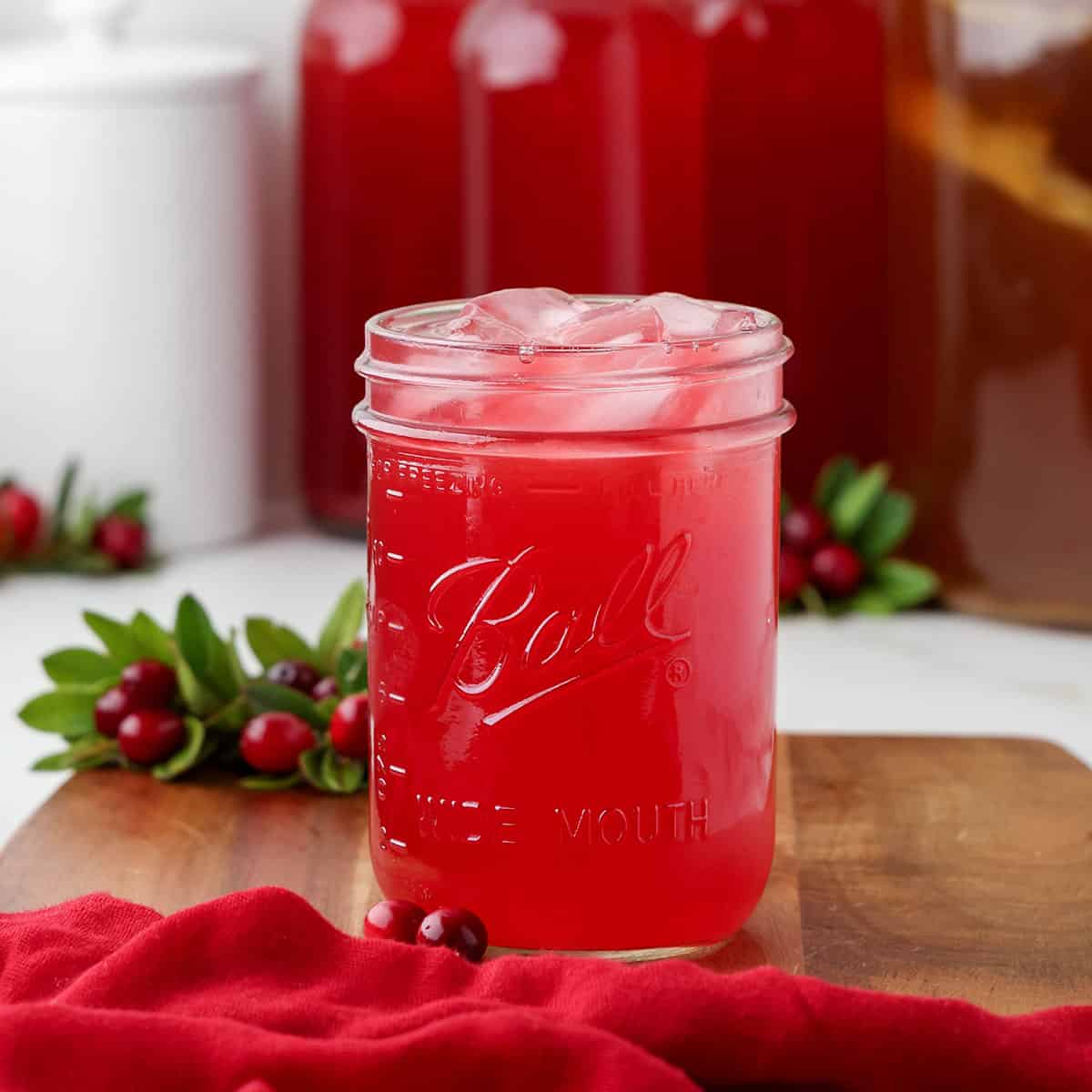
Want to save this post for later?
Cranberries and Orange
I’ve never really had a sweet tooth. Even when it comes to cranberry sauce, once I discovered the more tart and spiced version, I never looked back. As you can see from my pickled cranberries and fermented honey cranberries, I like some tartness at my table.
The absolute best pairing to cranberry is orange. This kombucha second ferment is deliciously fermented with cranberry orange syrup for a perfectly delicious tart winter flavor.
Aside from how tasty it is, this kombucha has tons of supportive properties. It is full of healthy probiotics, of course. In addition to that, it gives vitamin C and antioxidants, and studies prove that it promotes urinary tract health to prevent UTIs.
When cranberries are ripe during the winter, it is a perfect time to get this festive kombucha brew fermenting and flavored. Leave some out for Santa; he needs it after all the cookies he eats!
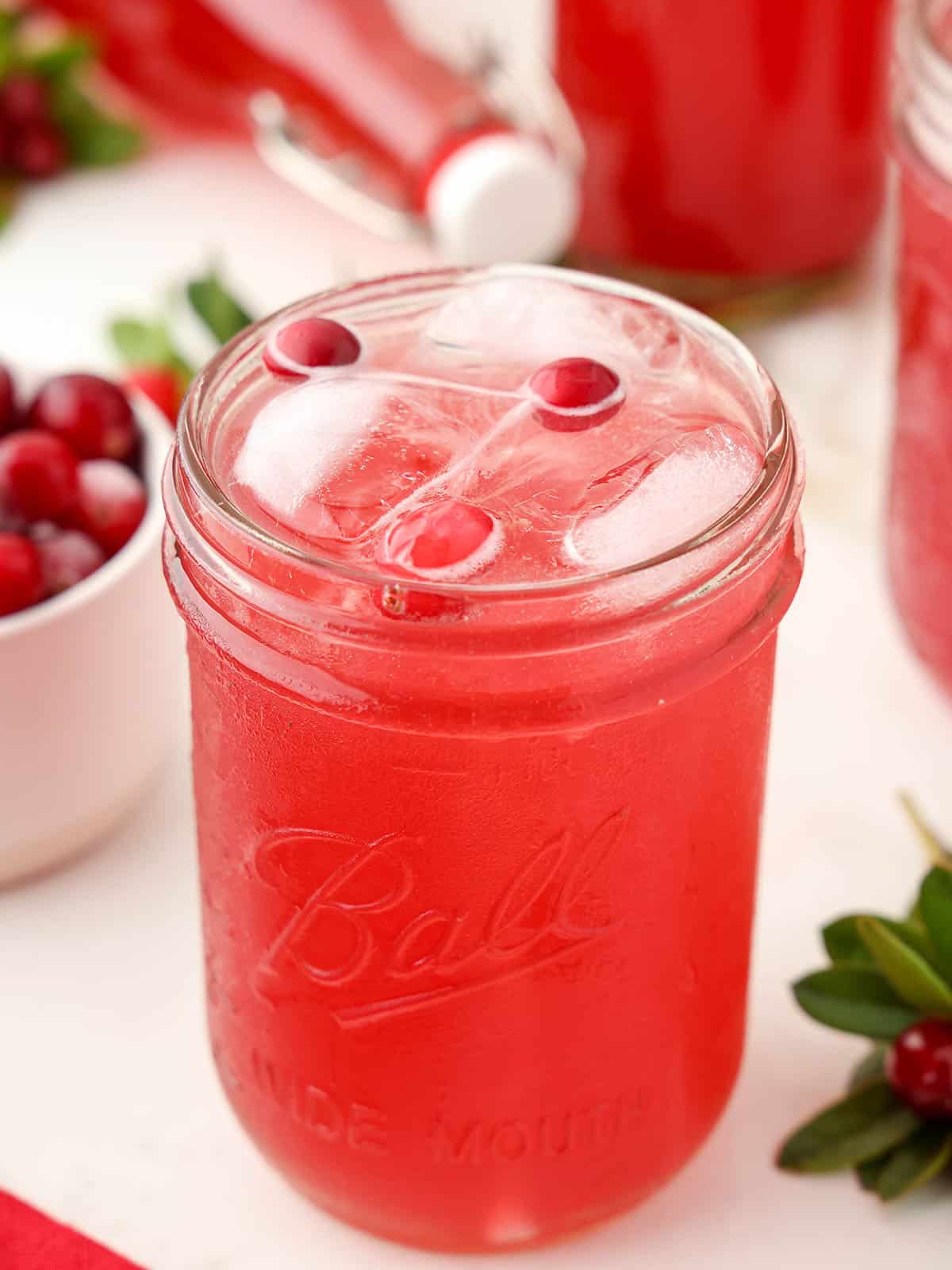
Get recipes for desserts, snacks, breads, side dishes, drinks, and preserving using apples, pumpkins, winter squash, cranberries, and more in my ebook, Cozy Autumn Recipes!
Kombucha Second Fermentation
The second fermentation process is how you flavor kombucha. There are lots of options like ginger, strawberry, hibiscus, and dandelion. Besides seasonal flavors and herbal properties, the second fermentation process creates fizz.
If you’re new to brewing or second fermenting kombucha, don’t fret. This process is easy, and as with all ferments, the main ingredient is time. It starts with an original brew of kombucha made with a SCOBY (Symbiotic Colony Of Bacteria and Yeast).
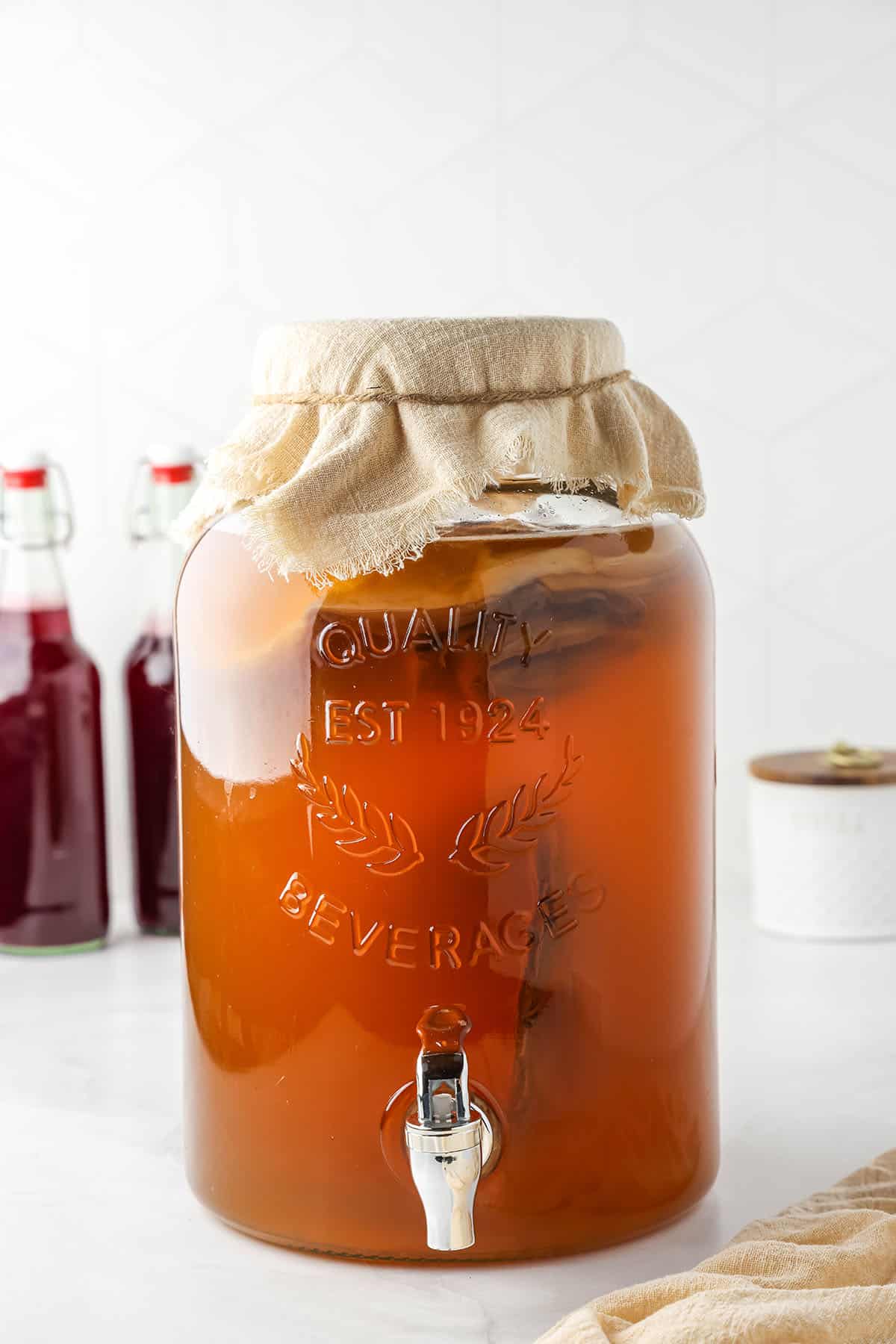
For making cranberry kombucha, black tea or green tea kombucha are both ok to use as the starter ferment. Made with the bacterial goodness of a SCOBY, these base kombuchas will kick start the second ferment. No SCOBY is necessary for a second ferment.
Don’t stress about the sugar in the cranberry syrup. It’s necessary to fuel the ferment, and the bacteria and yeasts from the kombucha starter will metabolize the sugar and produce the fizz. It’s a win-win!
If you want the kombucha slightly less sweet, decreasing the sugar a bit is okay, but it does need some sugar.
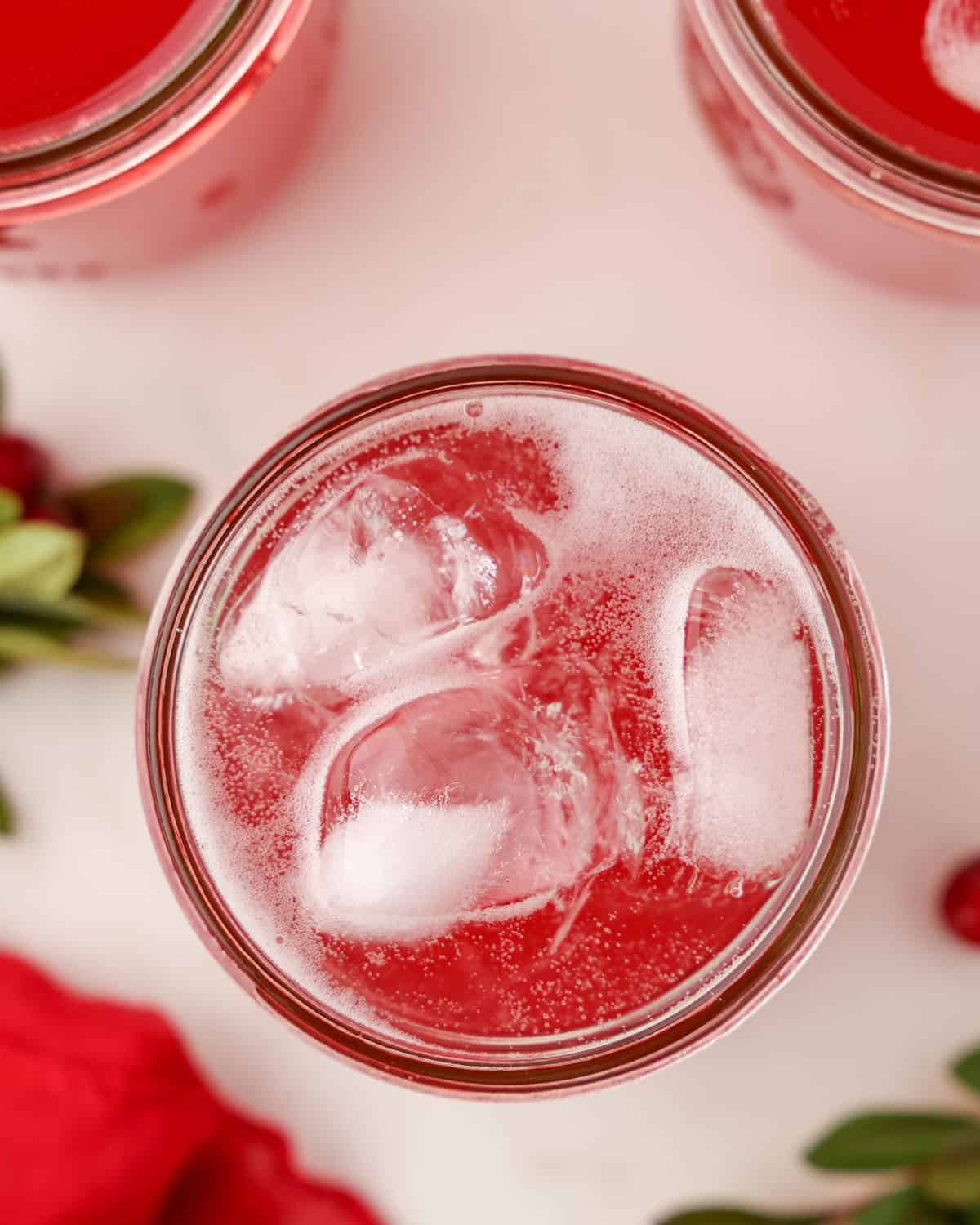
Cranberry Kombucha Recipe
This recipe makes about four bottles that are 16-18 ounces each. I like using flip-top bottles; they make the process much easier.
Ingredients
Whole cranberries: Use fresh or frozen, whatever is available.
Sugar: I use organic cane sugar. If you want a less sweet kombucha, it’s ok to decrease the amount to 3/4 cup or 1/2 cup.
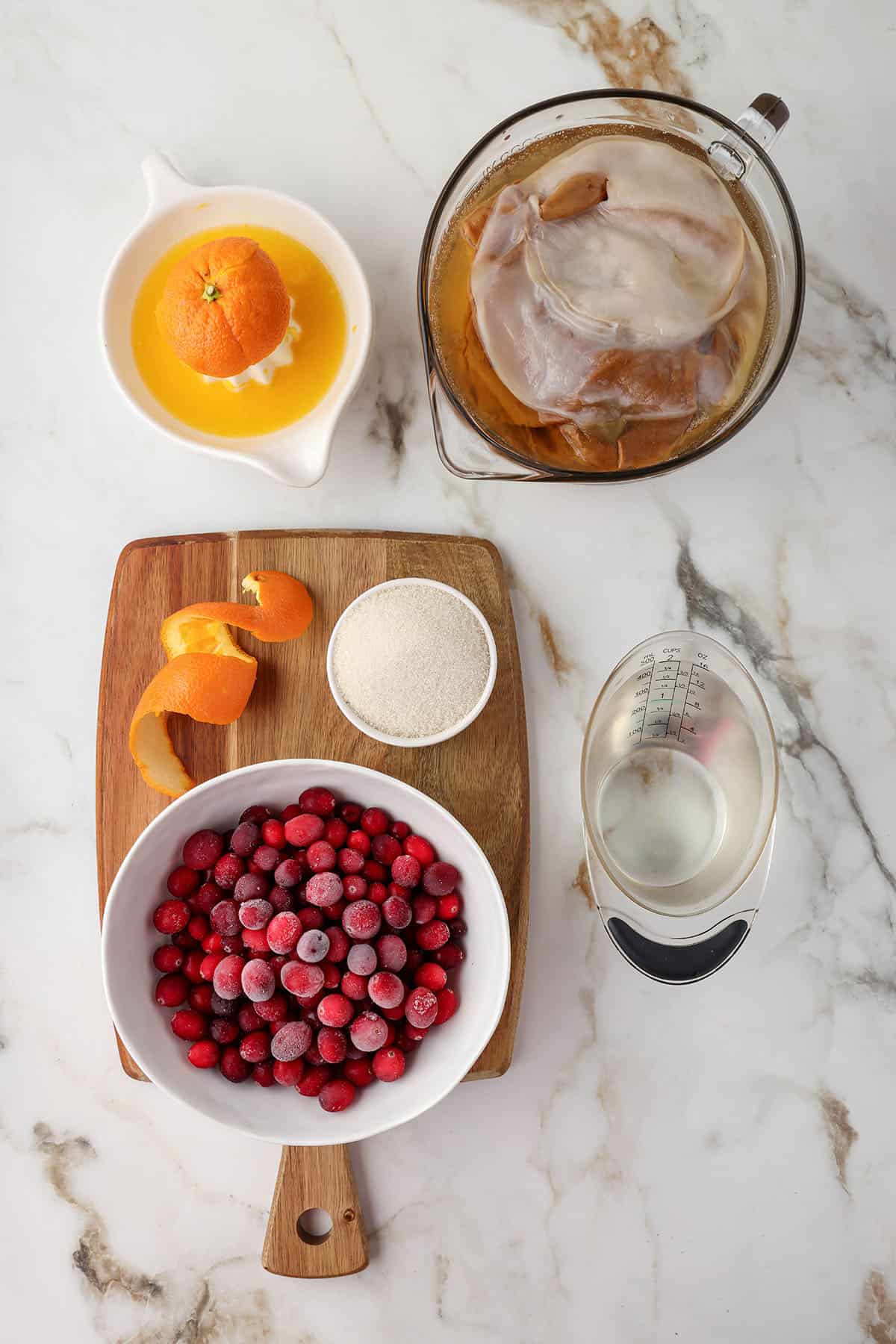
Fresh orange: The juice and the peel are both needed.
Fermented kombucha: Black or green
Second Ferment Cranberry Kombucha
To Make the Cranberry Syrup
First, put these ingredients into a medium pot and stir it well:
- cranberries
- water
- cane sugar
- orange juice
- orange peel
Bring the pot to a simmer on medium heat, stirring occasionally.
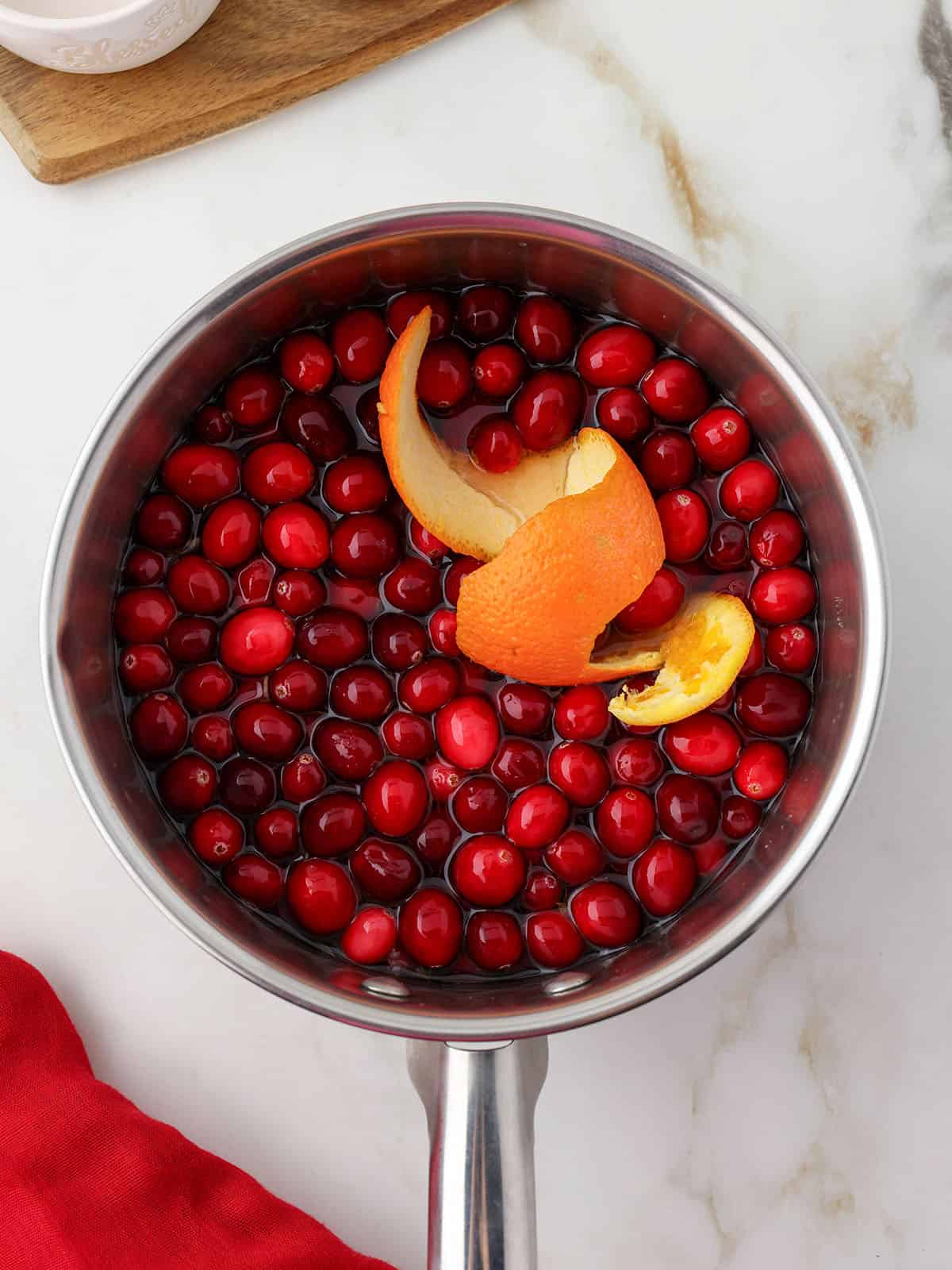
Then cover it with a lid, turn the heat down to low, and gently simmer the cranberries for 5 to 7 minutes. Leave the pot covered.
Leave the lid on the pot and remove it from the heat. Gently mash the cooked cranberries with a potato masher, then cover the pot with the lid.
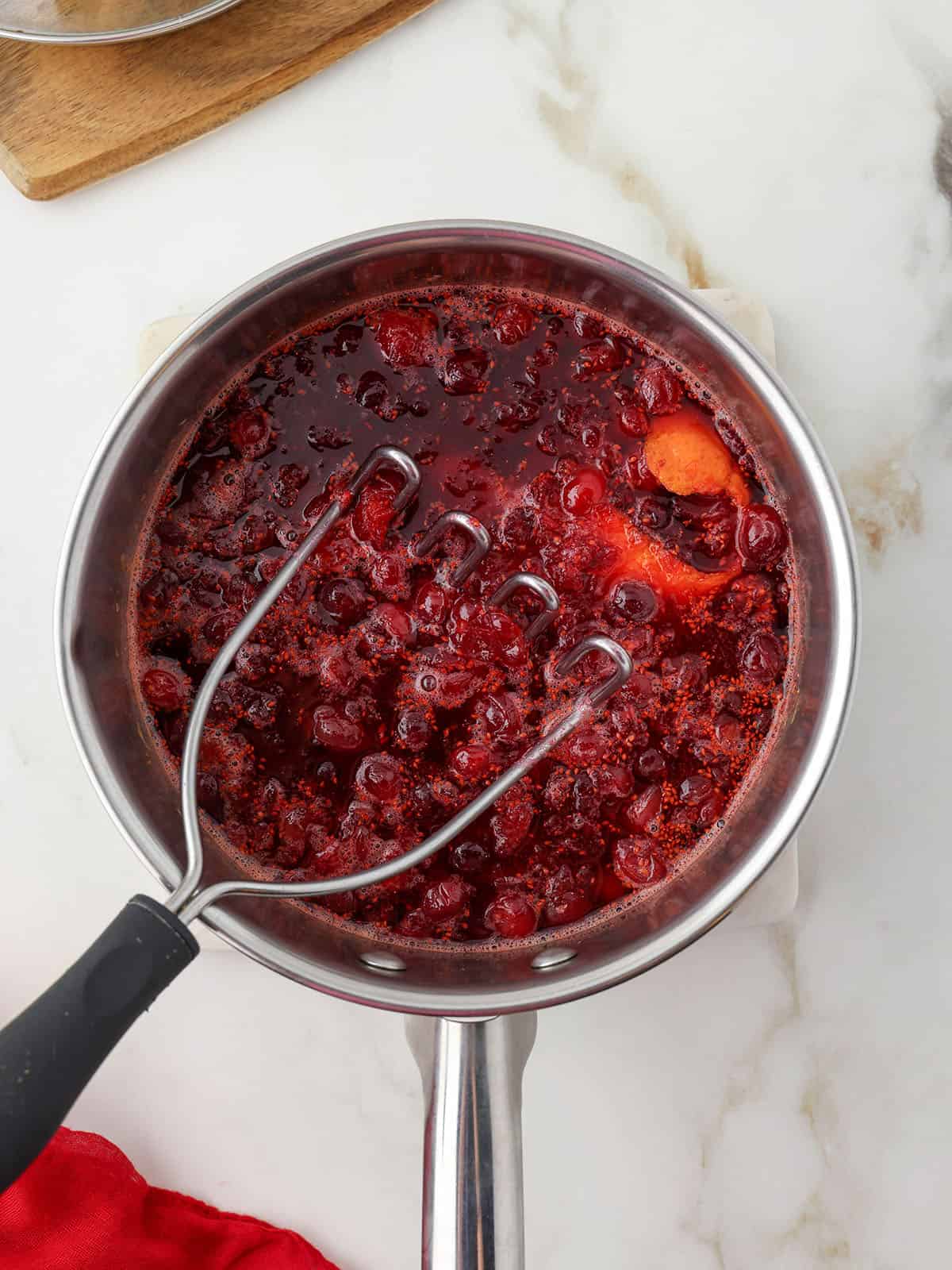
Let the cranberry syrup rest and infuse for 15 minutes.
Once infused and cooled, strain the cranberry syrup into a mason jar using a funnel, a mesh sieve, and a cheesecloth.
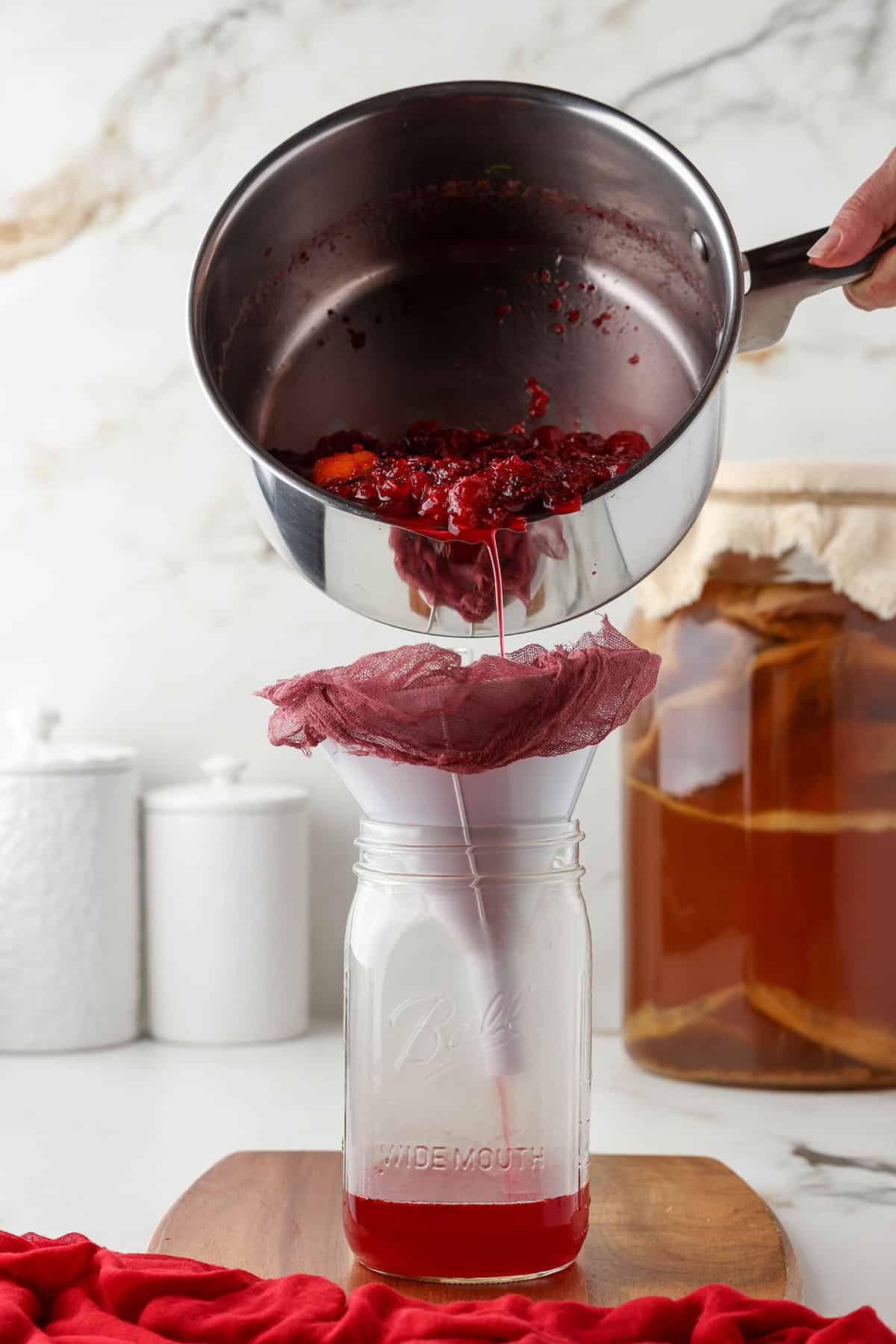
Press the cranberry pulp with the back of a large spoon to release the juices. Remove the pulp from the cheesecloth and set aside.
Once all the cranberry mixture is strained, you should have about 2 cups of cranberry syrup!
Make The Cranberry Kombucha
To get the cranberry kombucha ready to second ferment, pour 7 cups of the original black or green tea-fermented kombucha into a large pitcher.
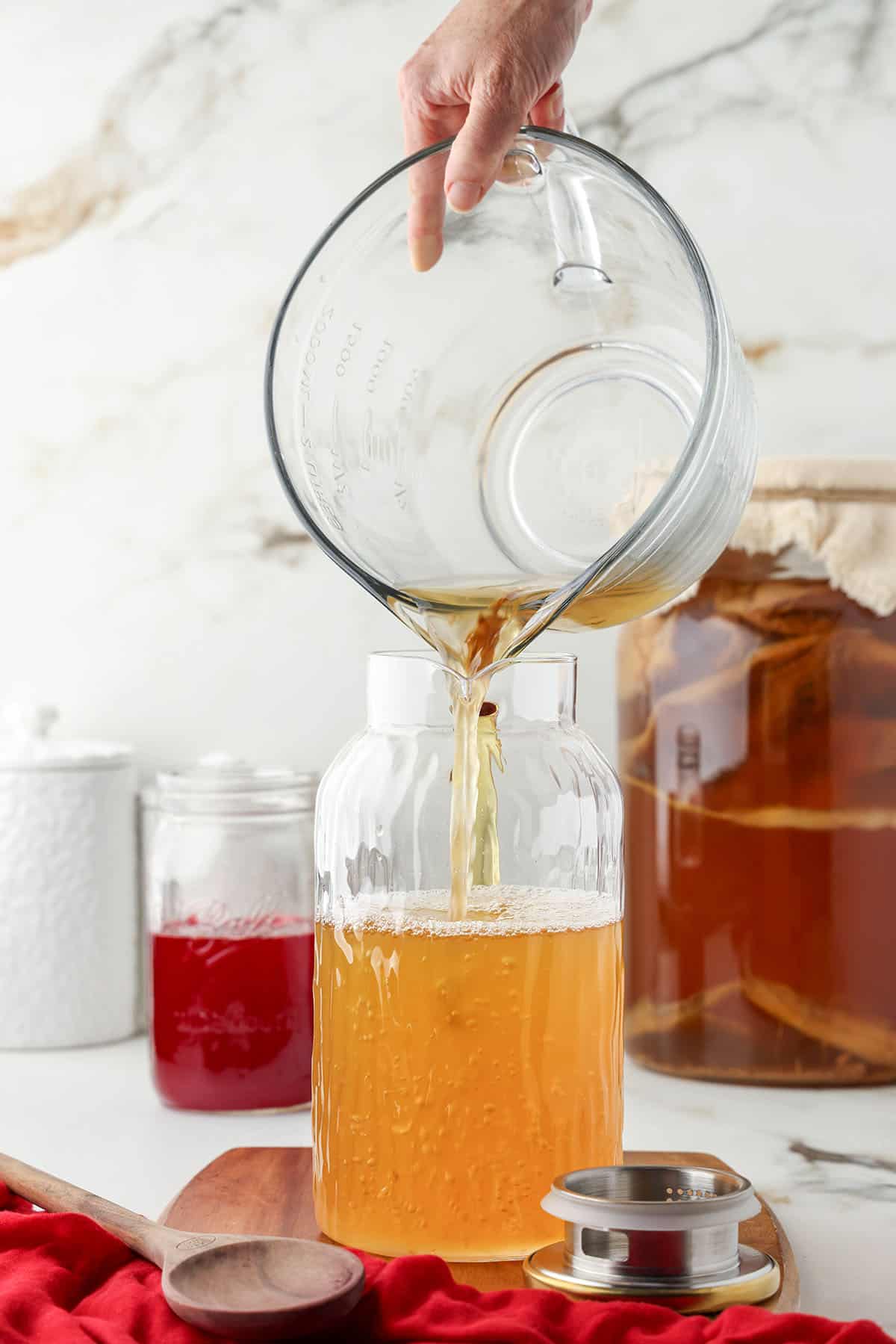
Then, add the cranberry syrup to the pitcher and mix it well.
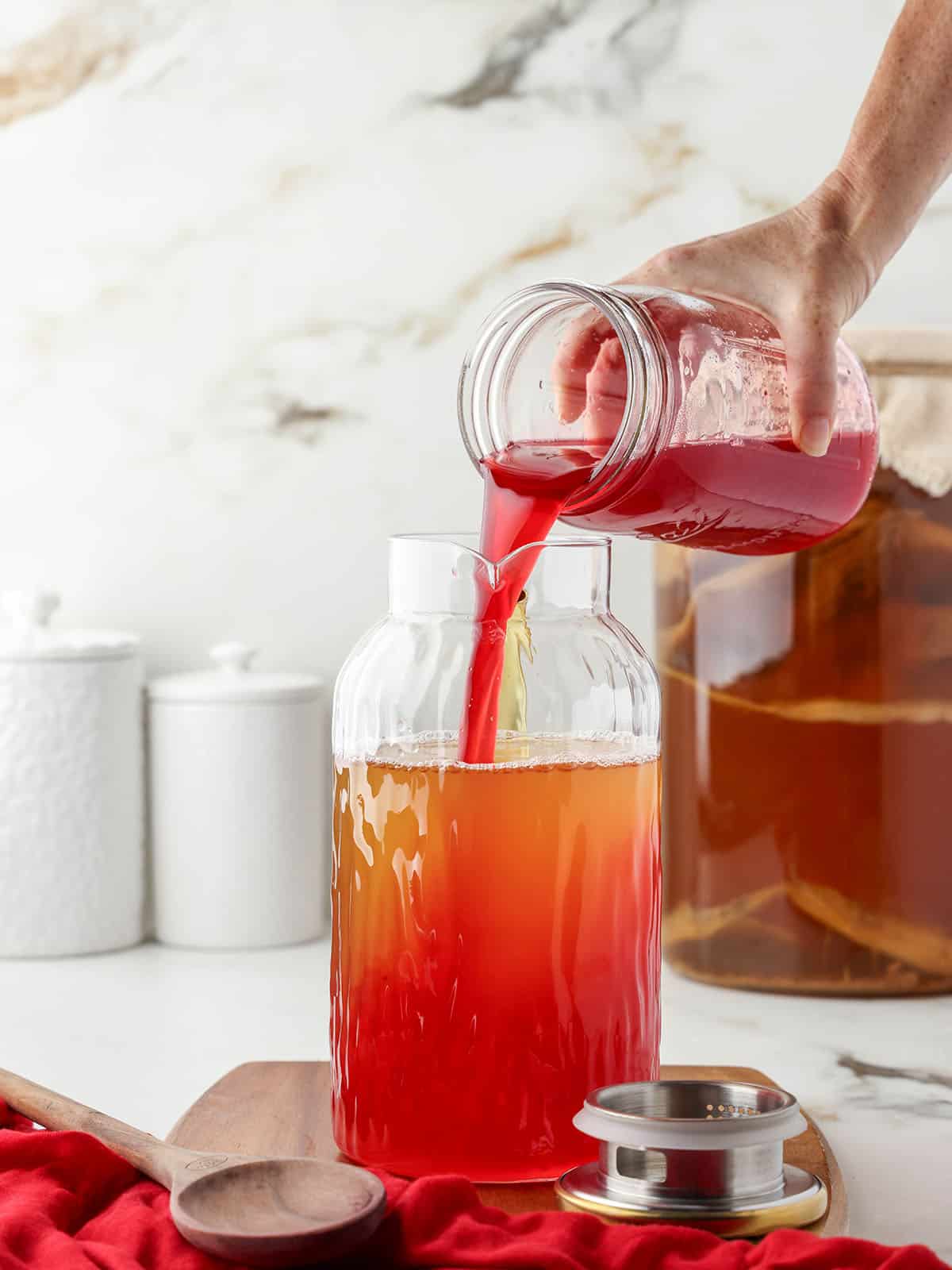
Use a funnel to pour the cranberry kombucha into swing-top bottles, then close the lids. Leave about 1-2 inches of headspace for carbonation to build.

Place the bottles out of direct sunlight for 2-3 days to complete the second fermentation process. The process goes much faster in warmer temperatures than in cooler temperatures.
Note: If you prefer to slow down the second fermentation process, place the bottles directly in the refrigerator to chill before enjoying.
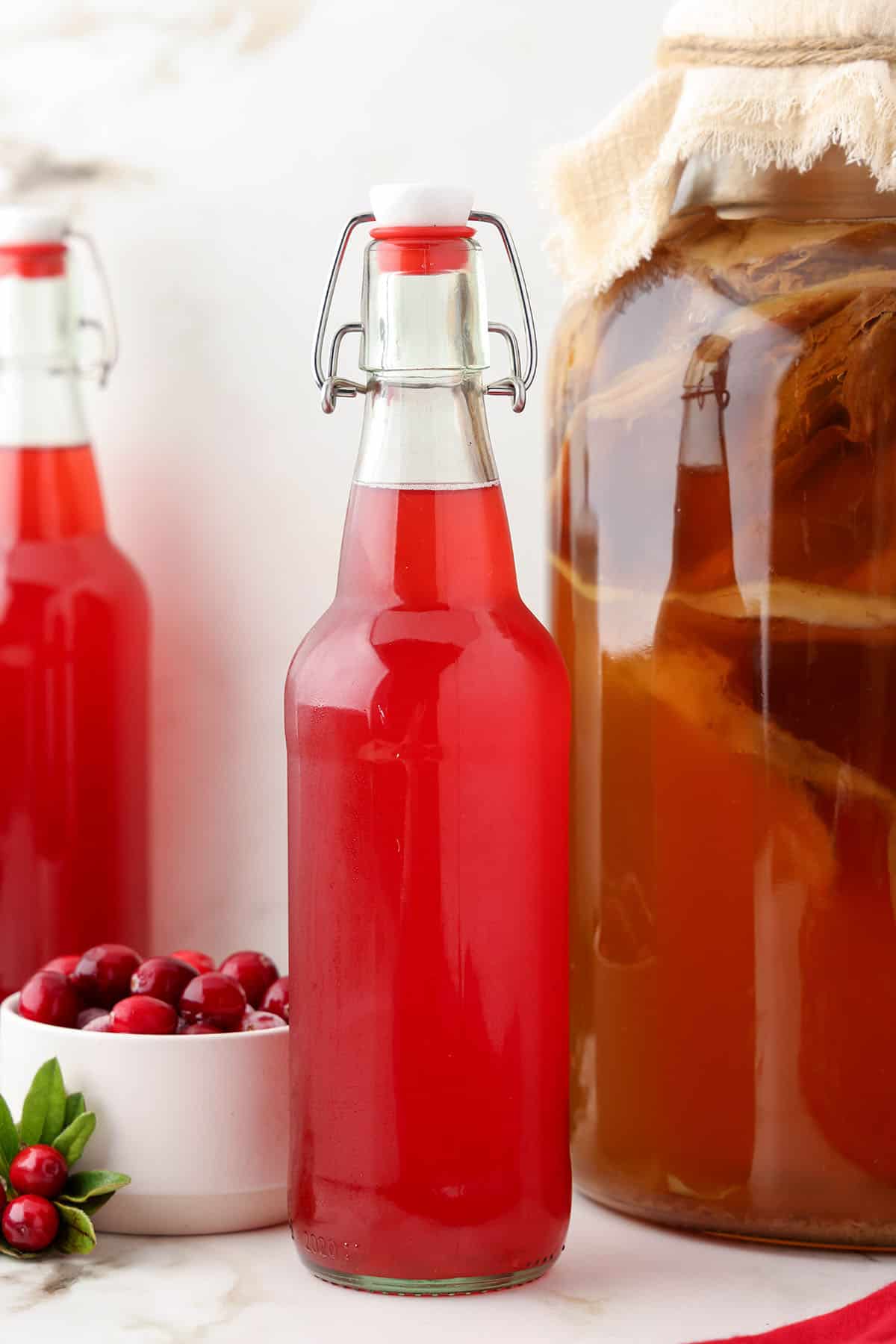
Check the bottles daily for carbonation by popping the lids to see if bubbles race to the top. This will also release pressure to ensure you don’t have any explosions in your pantry.
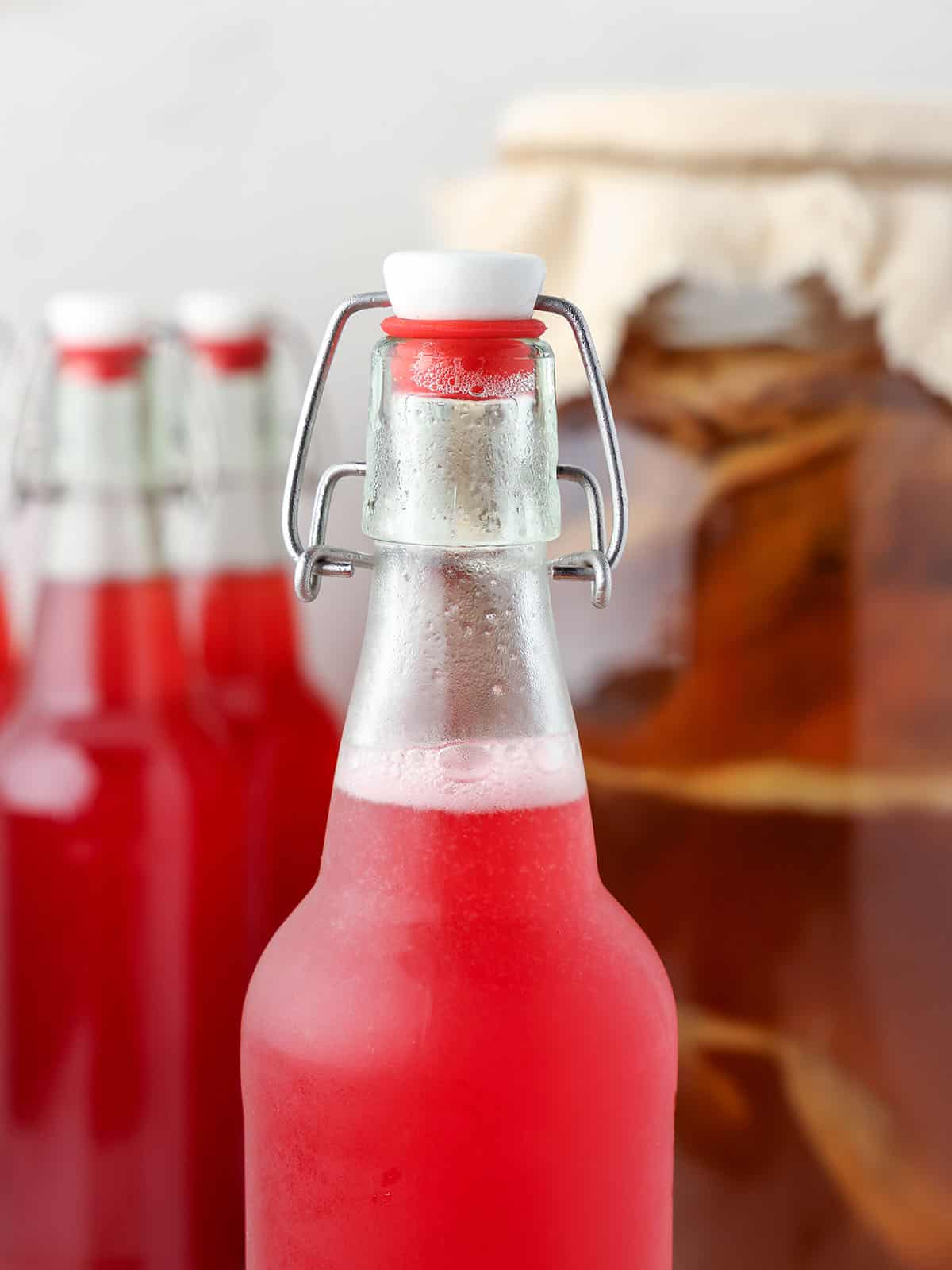
Just remember to close the lid back tightly to keep the carbonation from escaping.
Once the kombucha has reached the desired amount of carbonation, place the bottles in the refrigerator to slow the fermentation and chill the kombucha before serving. Drink it anytime!
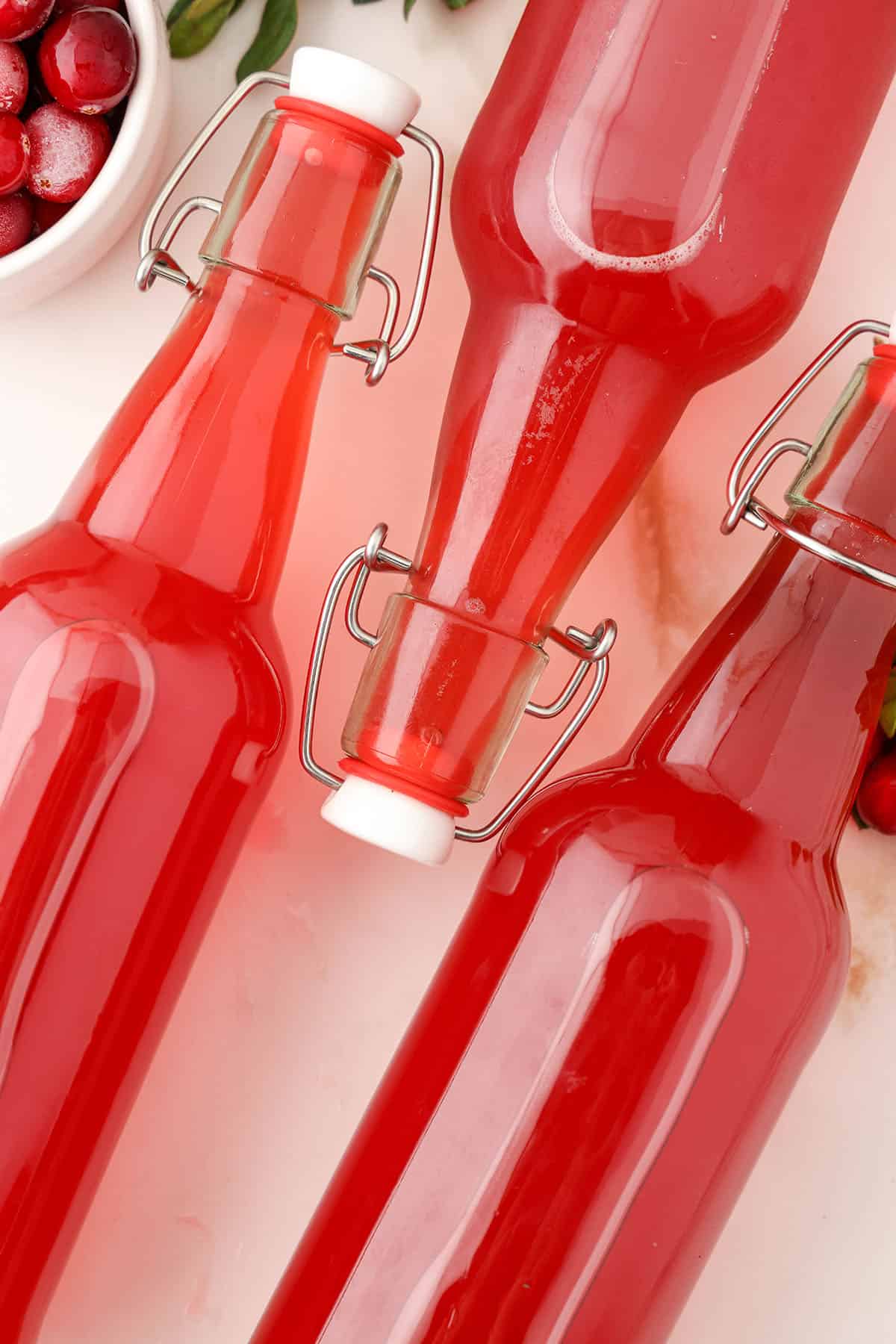
How to Serve and Store
Serve this tasty cranberry kombucha over ice whenever the occasion calls! I like to get some probiotics after holiday meals. If you tend to indulge in desserts or big meals, this drink will help you digest.
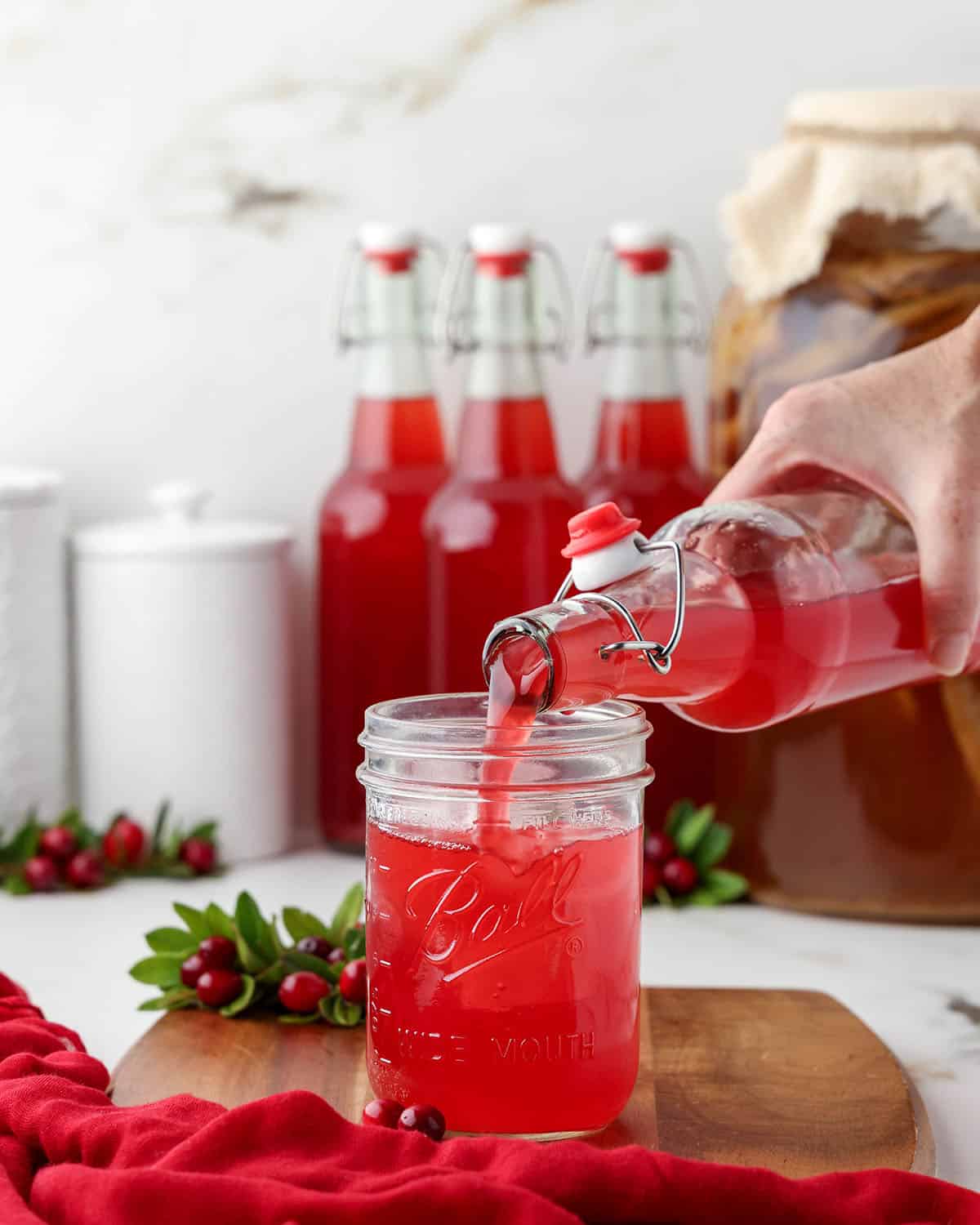
The leftover cranberry pulp can be blended on high with 1-2 tablespoons of water to create a simple cranberry refrigerator jam. It’s delicious on yogurt or ice cream!
Cranberries naturally contain lots of fruit pectin, so the “jam” is thick and sets up nicely in the refrigerator.
I recommend drinking this tasty festive kombucha with some cranberry orange muffins!
More Kombucha Flavors
- Pumpkin Kombucha
- Apple Ginger Kombucha
- Elderberry Kombucha
- Lavender Kombucha
- Blackberry Kombucha
- Watermelon Kombucha
- Rose Kombucha
Cranberry Kombucha
Ingredients
Cranberry Syrup
- 3 cups whole cranberries fresh or frozen
- 2 cups water
- 1 cup sugar
- 1 orange juice and peel
Cranberry Kombucha
- 2 cups cranberry syrup
- 7 cups fermented kombucha black or green
Instructions
Cranberry Syrup
- Put the cranberries, water, cane sugar, orange juice, and orange peel in a medium-sized pot. Stir well.
- Bring to a simmer on medium heat, stirring occasionally.
- Cover the pot with a lid, turn the heat down to low, and continue to simmer the cranberries for 5 to 7 minutes. Leave covered.
- Remove the pot from the heat and gently mash the cranberries with a potato masher. Cover.
- Let the cranberry syrup rest and infuse for 15 minutes.
- Strain the cranberry syrup into a mason jar using a funnel, a mesh sieve, and a cheesecloth.
- Gently press the cranberry pulp with the back of a large spoon to release the juices. Remove the pulp from the cheesecloth and set aside.
- Once all the cranberry mixture is strained, you should have about 2 cups of cranberry syrup.
Cranberry Kombucha
- Pour 7 cups of fermented kombucha into a large pitcher. Add the cranberry syrup to the pitcher and mix well.
- Use a funnel to pour the cranberry kombucha into swing top bottles, then close the lids. Make sure to leave enough headspace (about 1-2 inches) for carbonation to build.
- Place the bottles out of direct sunlight for 2-3 days to complete the second fermentation process.
- Once the kombucha has reached the desired amount of carbonation, place the bottles in the refrigerator to slow the process and chill the kombucha before serving.
Notes
- The kombucha will eat up some of the sugar during the second fermentation process, but if you prefer a less sweet drink, you can decrease the sugar in the cranberry syrup to ½-¾ cup.
- The leftover cranberry pulp can be blended on high with 1-2 tablespoons of water to create a simple cranberry refrigerator jam that tastes delicious on yogurt or ice cream! Cranberries naturally contain lots of fruit pectin, so the “jam” is thick and sets up nicely in the refrigerator.
- The second fermentation process will take a few days. The process can go much faster in warmer temperatures than in cooler temperatures. Check the bottles daily for carbonation by popping the lids to see if bubbles race to the top. This will also release pressure to ensure you don’t have any explosions in your pantry.
- Remember to close the lids back tightly to keep the carbonation from escaping.
- If you prefer to slow down the second fermentation process, place the bottles directly in the refrigerator to chill.

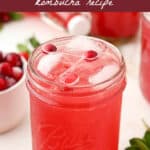

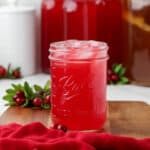

Super genial
Where do I find kombucha, what does it look like,
What is Scoby?
This sounds good I might want to make.
I did the cranberries in honey and ginger and take that every other day
Kombucha is a fermented tea. You can usually find bottled kombucha in the refrigerated section of most grocery stores, often near the juices or healthy drinks. A SCOBY (Symbiotic Culture of Bacteria and Yeast) is what kickstarts the fermentation process. It looks like a jelly-like disk and floats on top of the tea during brewing. If you’d like to make kombucha at home, you can purchase a SCOBY starter online.
I really want to make this I was wondering I have two vinegars one dandelion and one apple that have scobies grown in them can I use these ? And if not for this recipe what can I use them for ? Thanks C . Maier
You can use a vinegar SCOBY to make kombucha, but it’s not the best option because of differences in microbial makeup. Vinegar SCOBYs produce more acetic acid, which can cause a sharper, vinegary flavor, and may need multiple batches to adjust to sweet tea fermentation. It’s best to use a kombucha SCOBY or grow one from raw, unflavored kombucha.